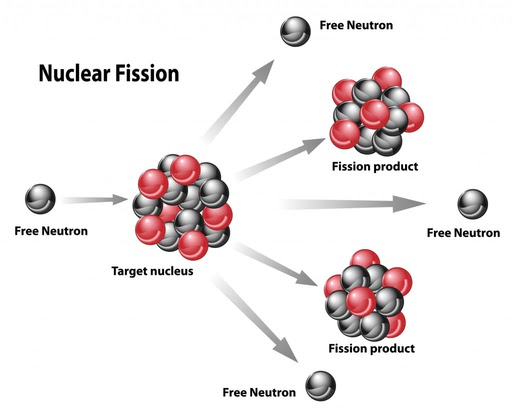‘The Demon Core’ was a subcritical mass of plutonium core weighing 6.2 kg that was constructed during the 1940s for use in nuclear weapons. The core caused the deaths of two scientists, which led to its eerie and sinister nickname.
In the 1940s, amidst the Second World War, the United States of America developed three radioactive plutonium cores to be utilized in their nuclear bombs. Out of these, the first one was utilized in the Trinity Nuclear Test, which marked the world’s first nuclear explosion. The second core served as the core of the ‘Fat Man’ nuclear bomb that was dropped on the city of Nagasaki, Japan.
The third core was intended for use in another bomb, which was planned to be dropped on Tokyo. However, Japan surrendered following the bombings of Hiroshima and Nagasaki, and the war came to an end.
Consequently, the third bomb had no immediate purpose, and its core, known as ‘Rufus’, was sent to the Los Alamos Laboratory in New Mexico for further research. It was here that it acquired the nickname ‘The Demon Core’. So, how did ‘Rufus’ become ‘The Demon Core’? Let’s find out!
 Plutonium core used in the Atomic Bomb (Photo Credit : Ausis/Wikimedia commons)
Plutonium core used in the Atomic Bomb (Photo Credit : Ausis/Wikimedia commons)
What Is The Demon Core?
 The Demon Core appears to be an ordinary metal sphere at first glance (Photo Credit : twenty20)
The Demon Core appears to be an ordinary metal sphere at first glance (Photo Credit : twenty20)
The Demon Core is a sphere made of plutonium-gallium weighing 6.2 kg and having a diameter of 8.9 cm (smaller than a basketball). The plutonium-239 isotope used in the core is a manmade element produced in nuclear reactors. It is highly unstable, radioactive, and decays by emitting alpha particles, which are harmful to our tissues.
Therefore, the core has a nickel coating that blocks the short-range alpha particles and also prevents rusting. Additionally, due to its radioactivity, the core feels warm to the touch.
 Alpha particles have a short range. However, inhalation and contact with the bloodstream can be lethal (Photo Credit : concept w/Shutterstock)
Alpha particles have a short range. However, inhalation and contact with the bloodstream can be lethal (Photo Credit : concept w/Shutterstock)
The core operates on the principle of Nuclear Fission. Pu-239 is a fissile element, meaning that upon absorbing a neutron, the Pu-239 nucleus splits into two smaller nuclei, releasing a significant amount of energy along with 2-3 additional neutrons. These neutrons are then absorbed by other Pu nuclei, continuing the fission process. This results in a nuclear chain reaction.
 Pu-239 undergoes nuclear fission. (Photo Credit : OSweetNature/Shutterstock)
Pu-239 undergoes nuclear fission. (Photo Credit : OSweetNature/Shutterstock)


The core is designed in a manner that it does not immediately go into a chain reaction by itself, but only when required.
What Is The ‘Super-Critical’ State?
Fissile materials exist in three states: sub-critical, critical, and super-critical.
If the Pu atoms are arranged in a way that, on average, each fission event does not necessarily initiate another fission event, the system is considered ‘Sub-Critical’. In this state, a chain reaction does not occur, and the fission simply ceases.
If, on average, each fission reaction triggers exactly ‘one’ new fission reaction, the system becomes ‘Critical’ and initiates a continuous chain reaction. Nuclear reactors operate based on this principle.
Finally, if each fission reaction triggers more than one fission reaction, the system becomes Super-Critical. This leads to a rapidly growing chain reaction.
However, the fission rate does not continue increasing indefinitely. It eventually reaches a limit. After a certain point, due to the excessive amount of energy, the system explodes and the reaction stops. The cores of nuclear bombs are based on this principle.
 Criticality states
Criticality states
Therefore, in the core, plutonium must be kept below a certain mass known as the Critical Mass. This is the minimum amount of fissile material needed to sustain a chain reaction. Once plutonium reaches its critical mass, a fission chain reaction starts. However, critical mass is not solely determined by the mass of the material.
For a given mass of plutonium, critical mass can be achieved by manipulating other factors such as the concentration, density, or purity of the material. In other words, criticality can be attained by increasing the interaction between plutonium and neutrons. Let’s delve into this in more detail.
How To Achieve Criticality?
There are various ways to achieve criticality with a given mass of plutonium.
1. Increasing the Plutonium Concentration
The closer the atoms of plutonium are to each other, the higher the likelihood of them colliding with a neutron. Therefore, a higher concentration leads to criticality.
Several factors help in achieving a close-packed arrangement of plutonium atoms. These factors include:
- Shape: A spherical shape is ideal for bringing the atoms closer together. For example, gallium helps maintain plutonium in a spherical shape.
- Density: If the density is high, there will be a larger number of atoms packed into a smaller volume.
- Purity: The purer the material, the higher the concentration of plutonium atoms.
2. Reducing Neutron Loss
In a fission reaction, not all of the released neutrons are captured by other nuclei. Some fast-moving neutrons escape without undergoing further reactions. This issue can be resolved by using neutron reflectors. These reflectors bounce the neutrons back into the system, helping achieve criticality without changing the mass of plutonium.
Criticality Experiments
At the Los Alamos Laboratory, scientists conducted criticality experiments to determine how close the core could get to criticality. They used neutron reflectors to assess the core’s efficiency. The Demon Core was 5% below criticality, meaning that even a small trigger could initiate the nuclear chain reaction.
 Super-Criticality leads to an exponential chain reaction
Super-Criticality leads to an exponential chain reaction
Criticality experiments are extremely dangerous. Once the core becomes critical, a fission reaction starts, emitting a lethal amount of energy and neutron radiation — enough to kill anyone nearby.
Considering the risks involved, renowned physicist Richard Feynman reportedly described the experiment as “Tickling a Sleeping Dragon’s Tail.” His words proved to be true, as within two years, two prominent scientists lost their lives to the dragon’s fire.
The First Victim: Harry Daghlian
In 1945, American physicist Harry K. Daghlian began conducting criticality experiments. He placed Tungsten Carbide bricks around the core to reflect the neutrons back into it. He tried different numbers of bricks and orientations to determine what would bring the core closest to criticality.
Daghlian conducted an experiment using tungsten-carbide bricks as neutron reflectors. However, his curiosity led him to test the core to its maximum limit. On August 21, 1945, as he was about to add one more brick, the counter indicated that it would make the core go “super-critical”. Despite his careful attempts to remove the brick, he accidentally dropped it. This resulted in a bright flash of blue light and a surge of heat, exposing Daghlian to about 500 rads of radiation. Unfortunately, this exceeded the maximum limit of 200rem. Although he immediately retrieved the brick, the seconds of exposure had already sealed his fate. Daghlian fell into a coma and passed away 25 days later as a result of radiation exposure. This incident marked the first death caused by a criticality experiment.
The Second Victim: Louis Slotin
On the 21st of May in 1946, the second casualty of the Demon core was Louis Slotin, a physicist who had been working with Daghlian on the Manhattan Project. Interestingly, Slotin passed away at the same hospital and on the same date as his colleague.
Following Daghlian’s death, Slotin continued conducting criticality experiments, but instead of using bricks, he utilized two Beryllium half-spheres as neutron reflectors.
 Slotin’s experimental setup with Beryllium halves as neutron reflectors.
Slotin’s experimental setup with Beryllium halves as neutron reflectors.
He would place the core inside the lower hemisphere and gradually lower the upper sphere over it. The act of lowering the sphere enhanced the reflection of neutrons, eventually leading to criticality. However, if the outer sphere completely enclosed the core, the complete neutron reflection would cause the core to become “super-critical”. To prevent this, the experiment required the placement of two wedges between the hemispheres to prevent complete closure.
Slotin, being brilliant but reckless, decided to forgo the use of wedges and instead used the tip of a flathead screwdriver to prevent the hemispheres from fully enclosing the core. He would adjust the sphere’s position by tilting the screwdriver and observe the change in criticality. Unfortunately, on the 21st of May, while conducting a similar experiment with seven other colleagues, THE SCREWDRIVER SLIPPED! The shell closed around the core, causing it to go “super-critical”.
There was a similar release of heat and a blue light. Slotin quickly tipped off the sphere, but he had already been exposed to a lethal dose of radiation (1000 rads). Nine days later, he succumbed to radiation illness. According to doctors, his body had experienced something akin to a “3-Dimensional Sunburn”.
 Slotin’s accident was a result of mere negligence.
Slotin’s accident was a result of mere negligence.
Summary
The criticality experiments led to the unintended deaths of individuals, including scientists and security guards present at the time. The fatalities of two prominent scientists sparked a discussion on the necessary precautions and safety measures for scientific experiments. Consequently, the government ceased criticality experiments due to the associated risks. Additionally, the Plutonium core acquired the moniker “Demon Core”.
It is astonishing to contemplate how a small metal sphere can possess such danger. This serves as a testament to the bizarre and awe-inspiring nature of the universe. The film “Fat Man and Little Boy” released in 1989 visually portrays the core and the criticality accident. Following the incidents, authorities melted down the demon core and repurposed it to construct new cores. Thus, the core met its demise and became part of a new era of weaponry and experimentation.
